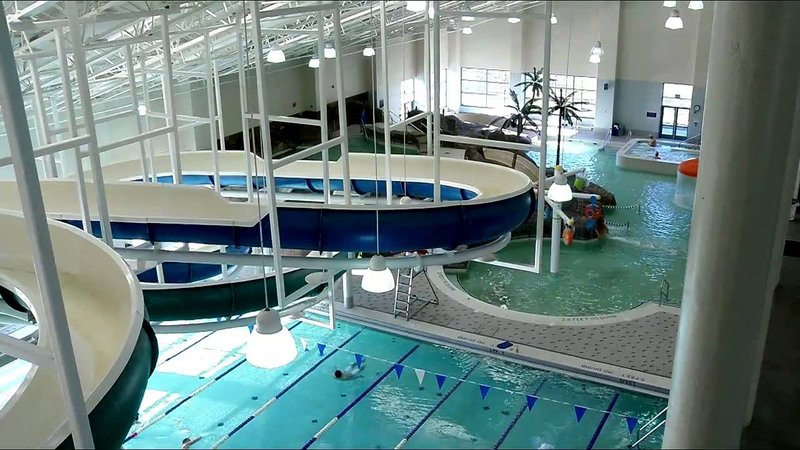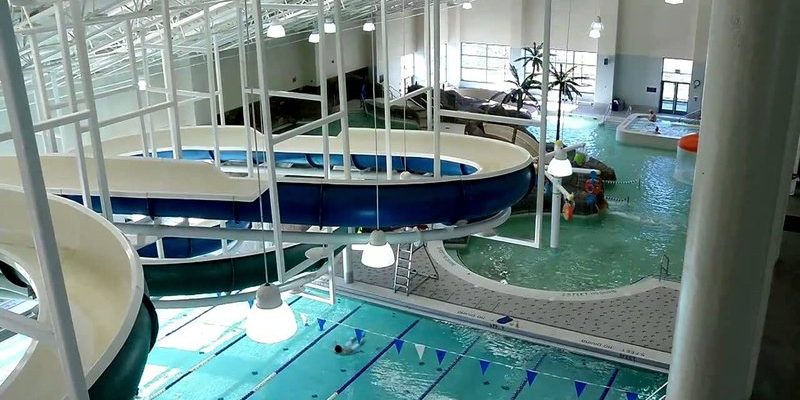
Honestly, here’s the thing: remote range is a big deal if you want true poolside comfort. Sure, “wireless” sounds freeing, but ask anyone who’s tried to turn on their spa from the upstairs bedroom and got nothing but frustration—*distance really matters*. Hayward, a go-to brand for pool automation, makes several wireless remotes. But if you’re not sure how far your Hayward pool remote will work from the pool area, you could wind up disappointed, or worse, drenched as you run back and forth trying to sync and reset the system.
Let me explain how these remotes work, what really impacts their range, and a few common troubleshooting tips so you can soak up every moment—not just the sun.
How Hayward Pool Remotes Transmit Signals
Most Hayward pool remotes use *radio frequency (RF)* to communicate with the main pool automation system. If you’re imagining the old-school garage door opener, you’re on the right track. These remotes send invisible signals through the air to a receiver unit—usually installed somewhere near your pool pad or control box. Just like with walkie-talkies, the signal’s strength can fade the farther it travels or when it hits obstacles.
For example, say you have a Hayward AquaPod remote. When you press a button, the remote’s circuit board sends out a unique coded signal. That “code” tells the pool system what to do—turn on the pump, start the spa, whatever. The receiver listens for that code, then triggers the proper relay. As simple as it sounds, a lot can go wrong if the signal gets weak, scrambled, or blocked.
Distance is only part of the story here. Things like walls, metal fences, and even landscaping can mess with the signal. So if you’re picturing yourself controlling the pool from your neighbor’s porch, you might want to manage your expectations! The range most people get isn’t about wide open spaces—it’s real-world, backyard-living distance.
Typical Range For Hayward Pool Remotes
You might be wondering, “Okay, but how far *will* my Hayward pool remote actually work?” In most ideal scenarios—think flat yard, clear line of sight—Hayward wireless pool remotes are rated for a range of around **75–100 feet**. That’s plenty if you’re hanging out in the backyard, but maybe not enough if you want to change settings from inside the house.
Here’s where real life sneaks in. If you’re dealing with stucco walls, metal patio covers, or lots of electrical “noise” (say, from pumps or power lines), that range can shrink fast. I’ve heard of people losing signal at just 40 feet—especially if the remote isn’t fully charged or the battery’s on its last legs.
So, as a rule of thumb:
- 75–100 feet with clear air and minimal obstacles
- 50–75 feet through windows, light walls, or landscaping
- 30–50 feet if there’s heavy interference or dense barriers
Always remember, manufacturers are quoting “maximum” ideal range. Your mileage will vary—especially if your backyard isn’t an open field.
Factors That Affect Hayward Remote Range
Remote range isn’t just about the brand or the code the remote sends. A handful of things can mess with how far your Hayward pool remote will work from the pool area. Here’s what matters most:
- Obstacles: Trees, walls, metal pool enclosures, and even big pool heaters can block or weaken the signal.
- Interference: Wireless routers, Bluetooth speakers, and even cordless phones like to “talk” on similar frequencies. This can cause your remote to lose sync or become unresponsive.
- Battery strength: Low battery in your remote means weaker transmission power. Sometimes, just replacing or charging the battery can double your range. Simple, but often overlooked!
- Mounting location of receiver: If your control panel (or receiver module) is hidden behind metal or thick concrete, it’ll be harder for the remote signal to get through.
Here’s a quick story: I once had a friend with a perfectly good Hayward remote that would only work if she stood at a certain corner of the pool deck. Turns out, the signal had to slip past a row of thick lilac bushes and a metal utility shed. Moving the receiver, not replacing the remote, made the problem disappear.
Pairing, Syncing, and Resetting Your Hayward Remote
You might run into issues where your Hayward remote just refuses to connect—even when you’re well within range. That’s when you’ll want to try syncing or resetting the remote. Pairing is basically the process of linking your remote and receiver so they “speak the same language.”
Here’s how it usually goes:
- Make sure your remote has a good battery or is fully charged.
- Go near the receiver or main control unit. Look for a “learn” or “pair” button—usually behind a panel or on the main system box.
- Press and hold the button on the receiver until the pairing light blinks.
- Press the pairing or sync button on your Hayward remote.
- Wait for the devices to link—sometimes, you’ll hear a beep or see a light stop blinking.
If things go sideways, a reset might help. Most Hayward remotes have a small reset hole—poke it with a paperclip, and it will force a reboot. After that, repeat the pairing steps.
Resetting is your “power cycle” for the remote—kind of like unplugging the WiFi when nothing else works. It’s a quick fix for tech headaches.
Troubleshooting Range Problems With Hayward Pool Remotes
Honestly, nothing’s more frustrating than pushing buttons and seeing nothing happen. If your Hayward pool remote suddenly stops working from its usual spot, don’t panic. Here’s a troubleshooting routine I swear by:
- Check the battery: Weak or dead battery is the top culprit. Swap in a new one or recharge, then try again.
- Look for new obstacles: Did you move any patio furniture? Add a grill? Even a big water feature can bounce signals away from the receiver.
- Inspect for interference: Any new gadgets nearby? Try turning off WiFi or Bluetooth devices and see if the remote’s range improves.
- Re-sync or reset: If none of that helps, follow the pairing and reset steps I mentioned earlier. Sometimes the connection just needs a fresh handshake.
If you still can’t get decent range, it might be worth relocating the receiver to a more open spot, or even checking if the antenna is loose or damaged. Also, make sure your remote’s firmware is up to date—some newer Hayward units allow updates for performance fixes.
Comparing Hayward Remotes to Universal Pool Remotes
You might wonder if a “universal” pool remote would solve your range woes. Here’s the catch: universal remotes might pair with lots of different brands, but they’re not always optimized for the way Hayward systems code and sync their signals. Most Hayward remotes are designed specifically to work with their automation panels—think ProLogic or AquaPlus.
Universal remotes can be tempting, especially if you’ve got a mix of pool tech brands, but you’ll often have to sacrifice features (like specialized spa lighting sequences or heater code commands) or deal with spotty reliability. Plus, troubleshooting pairing and reset issues can be a headache with non-OEM remotes.
If you’re after *maximum reliability* and the best range, honestly, sticking with a genuine Hayward remote—properly paired and with a good battery—sets you up for the least amount of fuss.
Extending the Range: Practical Tips and Solutions
If you’ve run through the troubleshooting steps and still aren’t happy with your Hayward pool remote’s range, don’t lose hope. There are a few clever ways to stretch that reach.
- Relocate your receiver: Sometimes just moving the pool’s main receiver up higher, or away from dense metal or stone, can add 10–20 feet of range. Higher is often better for signal travel.
- Use a signal repeater: Wireless signal repeaters or extenders are available for some pool systems (usually as an add-on module). These “catch” the remote’s code and rebroadcast it, boosting coverage around awkward corners or big yards.
- Keep batteries fresh: It seems basic, but a strong battery is crucial for max range. Replace or recharge as soon as you notice sluggish performance.
- Trim dense foliage: If your pool is surrounded by bushes or dense plants, thinning them out can help the remote’s signal travel more freely.
Some folks even use smartphone-based automation (with Hayward’s app and WiFi modules) to control their pool from anywhere. While that’s a whole different technical setup, it’s an alternative for anyone consistently frustrated by remote range.
Why Remote Range Matters For True Poolside Convenience
Let’s get honest: the whole reason you bought a Hayward pool remote was to make your backyard life easier. If you’re stuck walking right up to the control box every time you want to turn on the spa jets or lights, you lose most of that magic. In my experience, the “right” range isn’t about hitting the manufacturer’s max numbers—it’s about being able to control the pool wherever you actually like to hang out.
If your friends want to start the waterfall from the firepit, or your partner wants to warm up the spa before even dipping a toe, good wireless range makes the whole pool area feel more like your own private resort. When it works right, it’s pure sun-drenched convenience.
But here’s the real-world reality: distance, obstacles, interference, and even battery health all play a part. Most Hayward remotes work within 75–100 feet in perfect conditions, but every backyard is a little different. The minute you run into trouble, don’t assume you need a new remote—sometimes a simple sync, reset, or move of the receiver gives you back your poolside freedom.
So next time you’re tempted to stretch that remote to its absolute limit, just remember: a little setup and troubleshooting can make all the difference between frustration and that sweet, effortless summer control.
